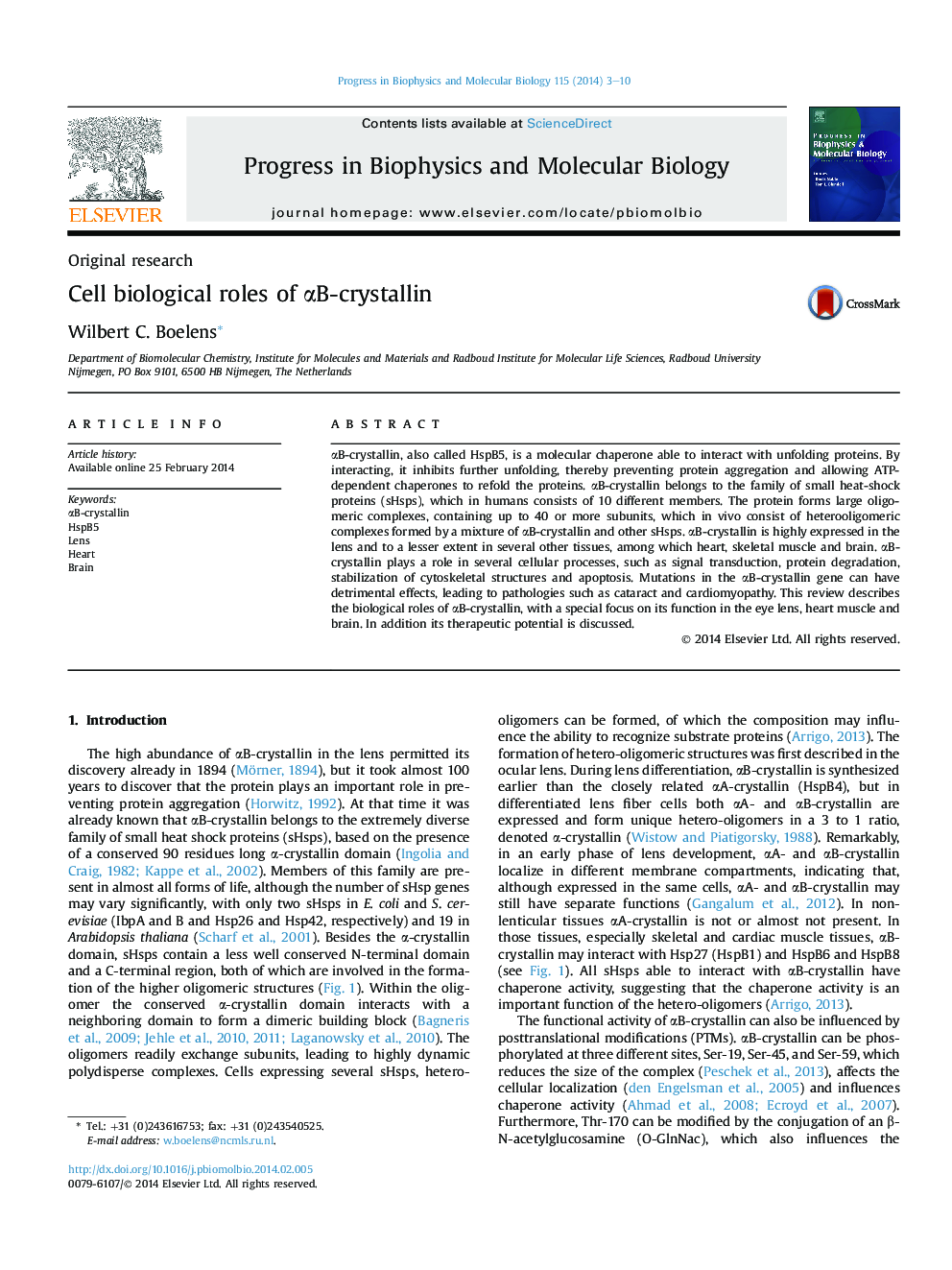| کد مقاله | کد نشریه | سال انتشار | مقاله انگلیسی | نسخه تمام متن |
|---|---|---|---|---|
| 2069999 | 1078453 | 2014 | 8 صفحه PDF | دانلود رایگان |

αB-crystallin, also called HspB5, is a molecular chaperone able to interact with unfolding proteins. By interacting, it inhibits further unfolding, thereby preventing protein aggregation and allowing ATP-dependent chaperones to refold the proteins. αB-crystallin belongs to the family of small heat-shock proteins (sHsps), which in humans consists of 10 different members. The protein forms large oligomeric complexes, containing up to 40 or more subunits, which in vivo consist of heterooligomeric complexes formed by a mixture of αB-crystallin and other sHsps. αB-crystallin is highly expressed in the lens and to a lesser extent in several other tissues, among which heart, skeletal muscle and brain. αB-crystallin plays a role in several cellular processes, such as signal transduction, protein degradation, stabilization of cytoskeletal structures and apoptosis. Mutations in the αB-crystallin gene can have detrimental effects, leading to pathologies such as cataract and cardiomyopathy. This review describes the biological roles of αB-crystallin, with a special focus on its function in the eye lens, heart muscle and brain. In addition its therapeutic potential is discussed.
Journal: Progress in Biophysics and Molecular Biology - Volume 115, Issue 1, July 2014, Pages 3–10